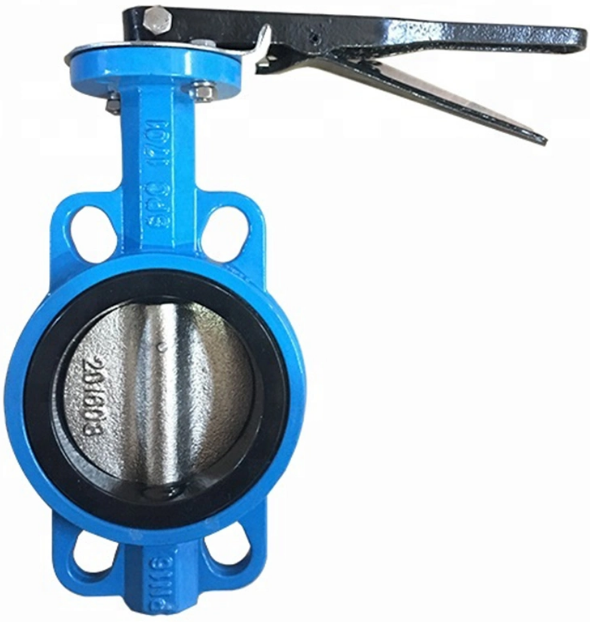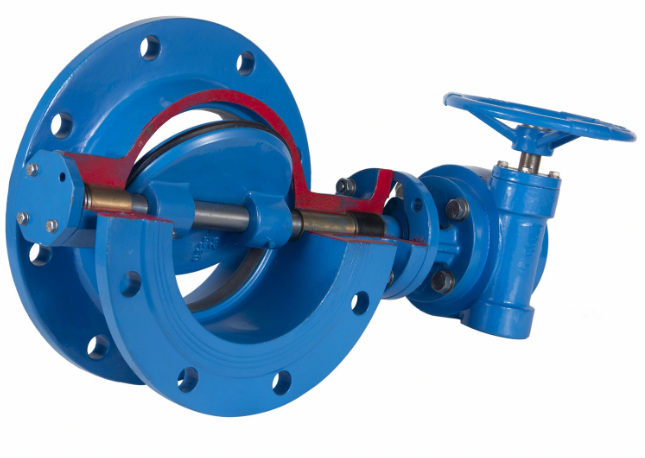Les vannes papillon sont essentielles pour contrôler le débit de fluide dans diverses industries. Les types courants incluent le DI (Fonte ductile) Vanne papillon et CI (Fonte) Vanne papillon. It’s essential for those engaged in fluid management systems to grasp their features and applications. Dans cet article, we explore the characteristics and uses of both DI and CI butterfly valves, highlighting their significance in modern industry.
Fonte ductile (DEPUIS) Vanne papillon
Matériel:
Made from ductile iron, which provides enhanced strength and durability.
Conception:
Typically has a concentric disc design, with the stem aligned at the centerline of the valve body.
Applications:
- Water Supply and Distribution: Fonte ductile (DEPUIS) butterfly valves find extensive application in water treatment facilities, distribution networks, and reservoirs. They serve to regulate the flow of water, segment areas for maintenance purposes, and manage pressure levels.
- Wastewater Treatment Valves: These valves play a crucial role in managing sewage and wastewater flow within treatment facilities. They guide effluent movement throughout the treatment process.
- HVAC Systems: Fonte ductile (DEPUIS) butterfly valves are essential components in heating, ventilation, and air conditioning (HVAC) systems. They allow precise control of fluid flow within pipes, ducts, and chillers, enhancing overall system efficiency.
- La production d'énergie: Fonte ductile (DEPUIS) butterfly valves are widely used in power plants. They play a key role in managing cooling water circuits, fuel handling, and steam systems, ensuring operational efficiency and safety.
- Chemical Processing Valves: In chemical plants, these valves regulate the flow of corrosive or aggressive chemicals. Constructed from ductile iron, they possess the resilience to withstand chemical exposure, guaranteeing durability and longevity.
- Food and Beverage Industry Valves: Fonte ductile (DEPUIS) butterfly valves are ideal for handling food-grade liquids, maintaining strict hygiene standards, and preventing contamination in the food and beverage sector.
- Pharmaceutical Manufacturing: Utilized in pharmaceutical processes, DI butterfly valves provide precise control over fluids. Their durability and corrosion resistance render them valuable assets in pharmaceutical manufacturing settings.
- Ship building: DI butterfly valves serve various marine applications, including ballast systems, bilge pumps, and seawater lines.
Avantages:
- Robust construction for high-pressure applications.
- Bonne résistance à la corrosion.
- Can handle elevated temperatures.
- Limitations:
- May be more expensive than other types.
- Not always ideal for throttling services.
Fonte (CI) Vanne papillon
Matériel:
Made from cast iron.
Conception:
Similar to DI butterfly valves, but with cast iron material.
Applications:
- Water Supply and Distribution: CI butterfly valves regulate water flow in municipal water supply networks, réservoirs, and distribution systems. They are cost-effective and easy to install.
- Wastewater Treatment: Used in sewage treatment plants and wastewater pipelines. CI butterfly valves control the movement of effluents and prevent backflow.
- Fire Protection Systems: CI butterfly valves are essential components in fire hydrants and sprinkler systems. They quickly shut off water flow during emergencies.
- HVAC Systems: CI butterfly valves manage heating, ventilation, and air conditioning systems. They regulate fluid flow in pipes and ducts.
- Industrial Processes: CI butterfly valves serve in chemical processing, fabrication, and metal-mineral industries. They handle non-corrosive fluids and gases.
- Shipbuilding: Used in marine applications for ballast systems, bilge pumps, and seawater lines.
Avantages:
- Economical.
- Suitable for low-pressure applications.
- Good flow control capabilities.
Limitations:
- Prone to rust and requires regular maintenance.
- Not as robust as ductile iron valves.

In summary, DI butterfly valves are robust and suitable for various services, while CI butterfly valves are economical but better suited for low-pressure applications. Ductile Iron wafer butterfly valves offer cost-effectiveness and ease of installation but lack end-of-line service capability. Remember to choose based on your specific project requirements!
